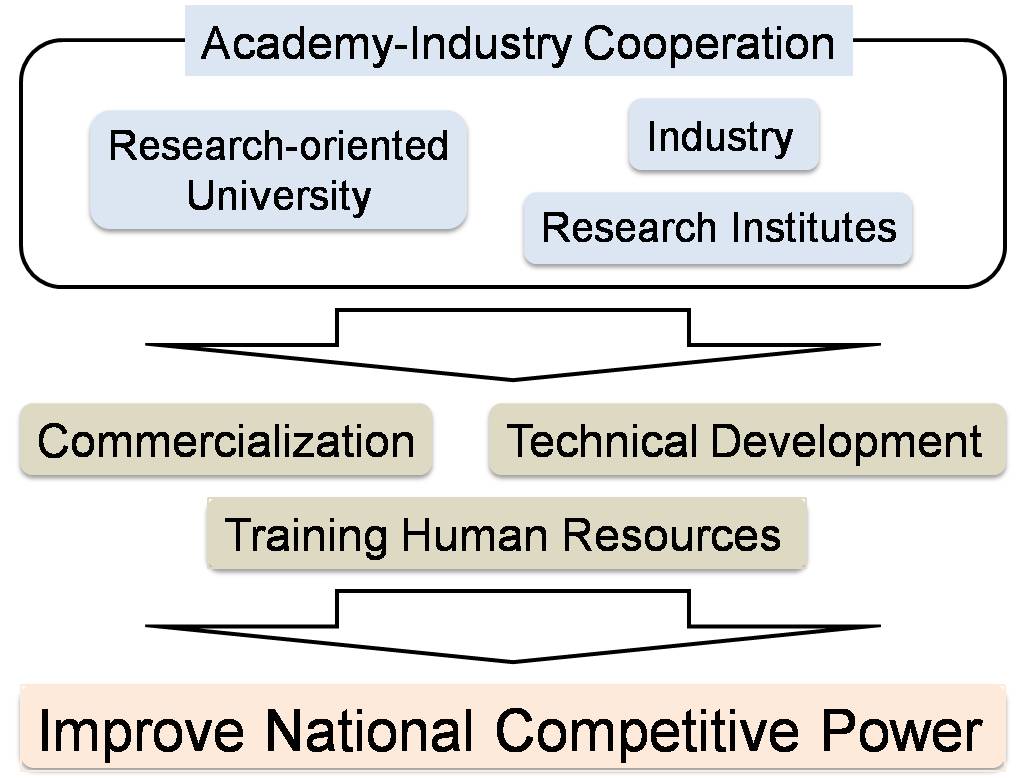The time are changing, and the meaning of a university is now somewhat different from that of past.
Long ago, universities were training sites for future leaders of each field. Among them, scientists were eager to discover and define principles of the world. What was published by one of the greatest scientists, Sir Isaac Newton of Cambridge University, was about behaviors of light and particles, and mathematical methodology.
On the other hand, technology has been developed in actual spots, by one’s experience and sense. Technicians didn’t have to refer to the works of Isaac Newton. There was no relation between academia and industry.
The sight which can be seen now is quite different. Universities develop industrial technologies using research funds from companies, or inversely sell their applicable technologies to companies. They also earn money by founding venture companies based on their source technology.
The amount of money ‘earned’ from industry now has become a sizeable index of evaluating universities. ‘The Times Higher Education World University Rankings’ started this year to grade it as ‘industry income’, and its portion will be larger and larger.
Then, why and how do recent universities collaborate with industry and earn money?
The universities’ role shifts
After the Industrial Revolution, the width between science and technology became narrower and narrower. That was because science developed enough to be applied in industry, and industry needed principles found by scientists, not only the experience of technicians. The development of the atomic bomb in Los Alamos during the World War II was the symbolic event in that the latest technology and science were unified.However, it was not until the late 1980s when industry really started to take part in universities, once considered the hall of academia. The head of the Office of Academy-Industry Cooperation, Mr. Song Wan-heup, explained the motivations: “The U.S was the first country to design collaboration of the academy and the industry. The primary background of that was international competition of the manufacturing business.”
He proceeded, “Politicians in the U.S thought how to deal with the rising industry of Japan. Their answer was to make the best use of their advantage, research-oriented universities. The source technology of universities has been now applied for new business plans since that time. Leaders of universities took advantage of that to gather more funds to maintain and expand universities as a kind of business. In addition, recently researched topics like Biotechnology were closely related to industry, then universities directly intended their commercialization. In short, three prescribed elements made the trend, and we call that ‘Academic Capitalism.’”
Nowadays, the true meaning of academy-industry cooperation evolved from a simple exchange of funds and technology between universities and companies to a well-organized network among industries, laboratories, and universities for personal, informational, and research exchange.
The model of collaborating academy and industry
 | ||
| ‚Ė≤ It shows how academy-industry cooperation contributes to national competitive power | ||
Even though ‘Academic Capitalism’ was defined ordinary universities were not prepared to take action. Individual organizations of professors are specialized for research, and they could also be concentrated on their research. The Academy & Industry Relations arose for supporting these kinds of issues.
Typically, the Academy & Industry Relations controls academy-industry cooperation to optimize research capacities for better results. At first, it manages various detailed projects from industries for professors of different majors. Because a lot of projects and funding are executed simultaneously, proper administration is necessary. The next important thing, which can be forgotten by many people, is an improvement of the legal system. The traditional system of universities doesn’t approve ‘earning’ and following management. Therefore, many universities try to make a cooperate body of academy-industry collaboration.
In addition, the more important mission stands for supporting commercialization of source technology. It launches venture companies based on technology of universities and invests. It will be easier to understand it if you remember the good example of Google; Stanford University supplied $25 million to two graduate students and finally founded the world’s foremost Internet search engine.


